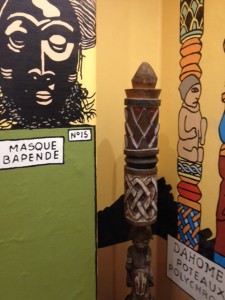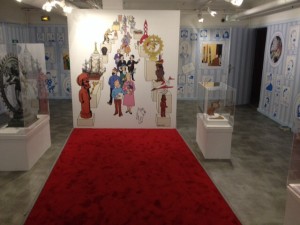Tintin and the Imaginary Museum/Tintin et le musée imaginaire – Le Musée en Herbe, Paris
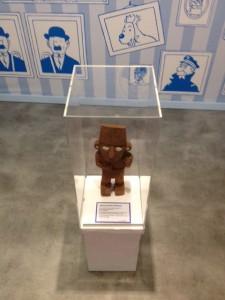
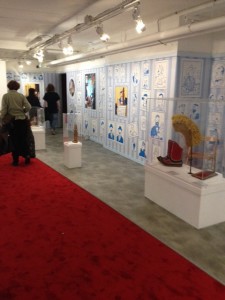
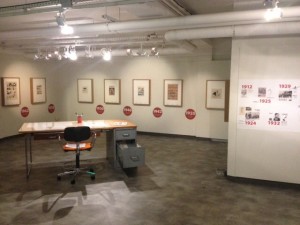
The exhibition is a collaboration with the Musée Hergé in Louvain-la-Neuve in Belgium. Tintinophiles (I’m not one, ok, just slightly enthusiastic) will recognise the title as a variation on Le Musée imaginaire de Tintin, which was itself an exhibition staged at the Palais des Beaux Arts in Brussels in 1979. As far as I can tell this exhibition does its own thing, though. The underlying idea is one of cultural exchange: it looks at how Hergé experienced the cultures he portrayed in Tintin’s adventures in large part through their material objects as displayed in Parisian museums. Scenes from various books are displayed alongside objects chiefly from the collections of the Musée du Quai Branly and representing peoples from Tibet, Peru, Egypt, China, India, the Ivory Coast and North America.
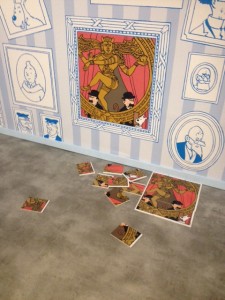
The message is made accessible to the museum primary audience by various means. Firstly, the objects are displayed at a low height, making them easily visible to even the toddlers I saw there. Blown up scenes and backgrounds of various Tintin characters are used to good effect, providing a bright and vibrant backdrop but also drawing the link between what is seen in a museum and what is seen on the page, particularly in the case of the very statue seen in L’Oreille cassée/The Broken Ear. Puzzles on the floor encourage play, and the size of the exhibition space is eminently manageable for little legs and short attention spans, while the dress up box of Tintin hats and ‘reporter’s notebooks’ provide an entry point for children who wish to linger and learn more. Whether this is the influence of the Musée Hergé, Musée en Herbe or both, I found it to be very effective and also clear in its statement that the exhibition is first and foremost for children, and only then for adults.
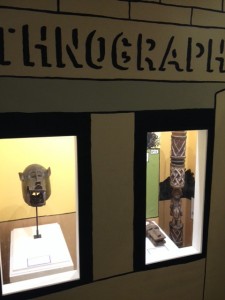
Adults too will find points of interest, however. The first room shows the evolution of Hergé’s career in advertising and illustration as well as his early forays into a the character of a little reporter, and there is also a looping documentary from 1976 which touches on Hergé’s friendship with a Chinese man as a factor which deepened his engagement with non-Western cultures, as well as briefly looking at the Nazi occupation of Belgium and the influence of Catholicism and the Scouting movement on the young artist. Something for those who don’t want to assemble puzzles on the floor, then.
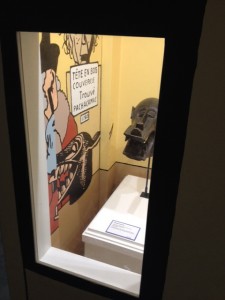
What impressed me most was how simple the whole thing was. There were relatively few ethnographic objects on display, I imagine the figure from the Broken Ear was the only deal breaker in selecting them, and there was much more in the way of background panels than fancy display cases or interactive exhibits. Yet I think that for the right child it could really go far in stimulating interest either in here cultures portrayed, the books they were portrayed in, or why not go wild and say maybe even sow the seeds for future Wanderlust or an interest in the display of indigenous cultural property. The thing in putting together an exhibition expressly for children is that the less didactic it is, the more freedom there is for young exhibition goers to take from it what they will, a lesson that these two institutions seem to have taken on board.
